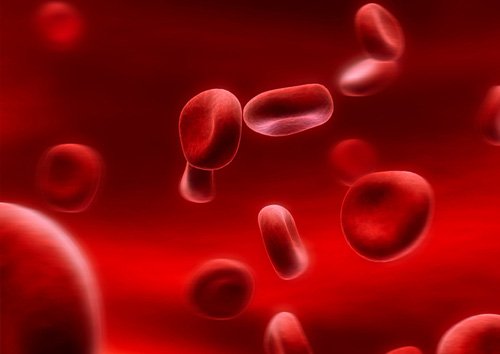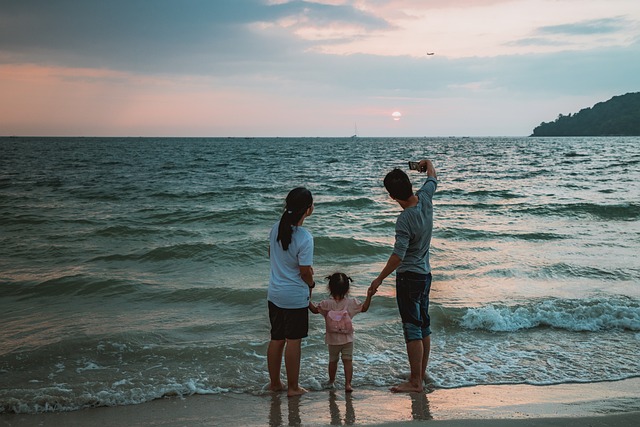While hematuria in children is a fairly uncommon medical condition, urinary abnormalities are commonly found in children. It is also one of the major illnesses that worry parents to the extent that they feel compelled to take their children to see a doctor. In general, hematuria occurs in children aged between 5–15 years old, but is rarely found in children aged under three year old. Children inflicted with gross hematuria have enough blood in their urine that it can be seen by the naked eye. In some cases, however, the blood can only be seen under a microscope. In the latter case, it is usually found by chance and occurs more often than the former. In either case, hematuria causes serious concern among parents about the function of the kidney and possible complications. Furthermore, hematuria can also be indicative of genetic inheritance in the family.
In fact, hematuria is not in itself a disease; rather, it is a sign indicating that there is abnormality and suggests that the child needs to receive a diagnosis to determine its cause, find out what risk factors are present, and determine how the hematuria will harm the child.
The most common cause of hematuria in children is a urinary tract infection. The common symptoms are as follows:
• Fever
• Hesitant, difficult and painful urination
• Back pain, mostly found in older children
• Incomplete bladder emptying
• Frequent urination
In addition to urinary tract infection, other causes of hematuria include inflammation of the urinary tract, wounds in the genital organs or the urinary tract, injuries caused by an accident, excessive urinary calcium excretion, stones in urinary tract, or abnormalities in the blood vessels of the urinary tract or urinary bladder. However, the latter two conditions are seldom found in children. Furthermore, inflammation of the kidney is also frequently found and will be elaborated upon in a following section.
It is important to distinguish between blood urine and red urine to rightly determine the presence of either hematuria or another condition that is not caused by a problem with the urinary tract, including:
- Red urine, which is a change in the color of the urine without any kidney-related abnormalities, and is possibly caused by food items such as beetroot; food coloring; certain types of medicines, such as some anti-tuberculosis drugs, iron chelating agents, and certain types of antimalarial drugs; and chemotherapy. These can be taken alone or in combination with other medicines.
- Genetic diseases or inherited metabolic disorders, parts of which have been screened out since birth. Certain types of diseases of which the child has a family history and shown symptoms, and other physical examination can be used for diagnosis.
- Blood diseases usually found in children with this kind of underlying disease but previously unknown or never been detected before, including thalassemia G-6-PD, whose excessive breakdown of red blood cells when there is a stimulating stress such as from fever, infection or some types of foods and medicines. The latter two causes have an effect on the G-6-PD patient which can cause hemolysis of erythrocytes in the vessels, resulting in the change of urine into hematuria. Additionally, abnormalities such as blood coagulation or platelet disorders account for blood in the urine due to high tendency of bleeding. Although these abnormalities are not the direct result of problems with the kidney or urinary tract, they can do harm to the kidney, causing acute renal failure, which requires the patient to be hospitalized immediately.
Hematuria found in children due to problems in the urinary tract and the kidney can be roughly divided into two main groups.
- Emergency Group: patients are inflicted with acute nephritis. Symptoms include swelling in the eyes, legs, or body; high blood pressure; and impairment of the kidney function. Patients are required to be hospitalized immediately as there are possibilities of complications such as convulsions which are either as a result of the high blood pressure or metabolic disturbance, and possibility of acute renal failure which needs acute dialysis and supportive care to prevent life-threatening conditions and the chronic renal failure in the future.
- Non-Emergency Group: the color of the urine of patients in this category can be divided into the following groups.
- Bright red urine indicates that there are erythrocytes or blood spilling out to the urinary tract and its direct surroundings. The erythrocytes or blood come from urethral meatus, urethra, urinary bladder, ureter, uretic junction and the pelvis. The causes, as mentioned earlier, include:
- Infection of the urinary bladder
- Infection of the urinary tract
- Wounds in genital organs or the urinary tract
- Injuries caused by accidents in those who have direct severe injuries or those with inherited disorders or abnormalities at birth. If there is a direct impact, hematuria may occur
- Excessive urinary calcium excretion
- Stones in the urinary tract
- Abnormalities in the blood vessels of the urinary tract or urinary bladder
- Malignant tumors in the urinary tract (seldom found in children)
- Brownish or cola-colored urine indicates that the abnormalities found are from acute or chronic nephritis, which is ruled out from the emergency group. This group comprises genetic acute glomerulonephritis, acute glomerulonephritis with identified causes such as acute glomerulonephritis as a result of infection, and acute glomerulonephritis with unknown cause. This group plays a significant role in the kidney function. In certain cases, the condition will lead to kidney failure. The doctor will monitor the development of the condition closely on a long-term basis, ask about the patient’s medical history, and deliver a diagnosis to the patient and family members in accordance with the results of the examination.
- Bright red urine indicates that there are erythrocytes or blood spilling out to the urinary tract and its direct surroundings. The erythrocytes or blood come from urethral meatus, urethra, urinary bladder, ureter, uretic junction and the pelvis. The causes, as mentioned earlier, include:
Running or March Haematuria is another disease that changes the patient’s urine into a brown or cola colour without the inflammation of kidney. This disease can commonly be found in older children or adults who do heavy and frequent exercise, such as jogging and karate. It can also be found in a semi-military training for high school students and orchestra drummers. Hypothetically, it occurs as a result of severe and repeated injuries to the erythrocytes in the capillaries of the hands and feet. As a result, red blood cells breakdown and turns the urine red. This condition lasts for 1–2 days and the usual prognosis is that there will be no effect on the functions of the kidney. However, some reports indicate that there is a possibility of this condition leading to acute renal failure.
In this case, it is advisable that the patient visit a doctor to confirm the diagnosis.
Additional Laboratory Test to Determine the Causes
Undergoing further testing depends on the medical history of the patient, the results of previous tests, or the category of illness the patient has. Primarily, the patient is given a number of tests including: urinary test to evaluate the erythrocytes and determine abnormalities, test of the urine culture, test of the ratio of calcium in the urine, general and specific blood test to screen for disease. Blood creatinine and ultrasound will be performed when there is a possibility of abnormalities in the structure of kidney or when a stone is suspicious. Additional tests will be required when indications lead to a specific cause.
Treatment
As there are many causes of the disease, the exact course of treatment depends on the cause.
For further information, please contact: http://www.samitivejhospitals.com/Home/en















